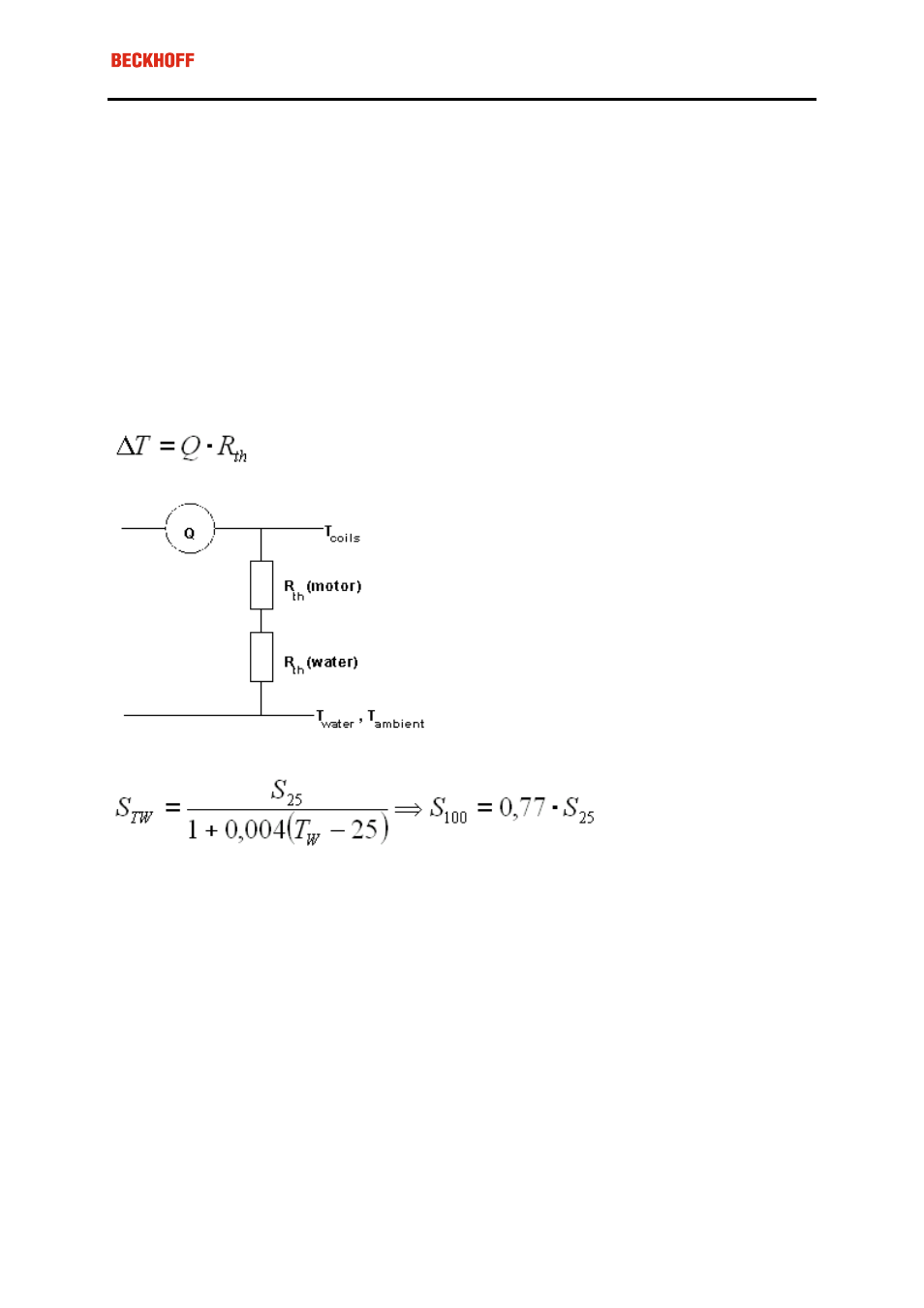Appendix, Heat transfer and temperature – BECKHOFF AL2000 Application User Manual
Page 32

Eiserstraße 5 / D-33415 Verl / Telefon 05246/963-0 / Telefax 05246/963-149
32
4. Appendix
Heat transfer and temperature
The dissipated power in the coil unit causes a heatflow to the ambient. The resulting temperature rise of the
coils is determined by the thermal resistance of the heat conducting route. The coil unit is fitted with a tempera-
ture sensor of the PTC 1kOhm type. This sensor detects overtemperature of the coil unit. The servocontroller
should check overtemperature at a level of 1000 Ohms
The water-cooling unit can be connected serial as well as parallel. Parallel connection demands a good flow
through the T-connection pieces. The watercooling lines are linked to the coil unit by means of standard M5
connections. Haake or Julabo cooling system are compliant with Beckhoff Industrie Elektronik linear motors.
Please contact Beckhoff Industrie Elektronik for more information.
As noticed before the linear motor’s continuous force is a measure for the thermal load. Fcont depends on the
motor constant STW and is limited by the allowed working temperature. For watercooling, Fcont is specified. In
that case the thermal resistance of both motor and water can be determined. The heat flow results in a limited
rise of the temperature. T
coils
can be kept controlled beneath the allowed working temperature.
Heatflow and watercooling
The motor constant depends on the temperature.
This means that the motor’s continuous force decreases at high temperatures. When no water cooling is ap-
plied, the heat flow usually results in a significant rise of the temperature. The amount depends on the situation.
Sometimes it is not so easy to keep T
coils
controlled beneath the allowed working temperature.
